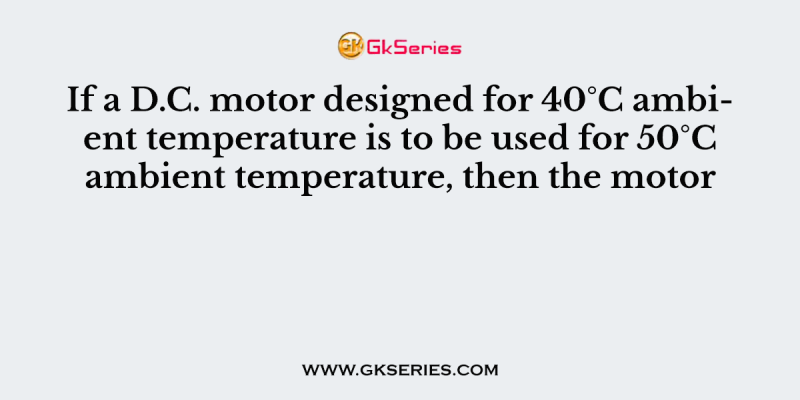
If a D.C. motor designed for 40°C ambient temperature is to be used for 50°C ambient temperature, then the motor
READ MORE +
If a D.C. motor designed for 40°C ambient temperature is to be used for 50°C ambient temperature, then the motor
READ MORE +
The plugging gives the
READ MORE +
For a D.C. shunt motor if the excitation is changed
READ MORE +
Which motor has the poorest speed control?
READ MORE +
Which one of the following is not necessarily the advantage of D.C. motors over A.C. motors ?
READ MORE +
At the instant of starting when a D.C. motor is put on supply, it behaves like
READ MORE +
The speed of a D.C. motor can be varied by varying
READ MORE +
In case the back e.m.f. and the speed of a D.C. motor are doubled, the torque developed by the motor will
READ MORE +
The speed of a D.C. shunt motor can be increased by
READ MORE +
If I2 be the armature current, then speed of a D.C. shunt motor is
READ MORE +
As there is no back e.m.f. at the instant of starting a D.C. motor, in order to prevent a heavy current from flowing though the armature circuit
READ MORE +
The speed of a motor falls from 1100 r.p.m. at no-load to 1050 r.p.m. at rated load. The speed regulation of the motor is
READ MORE +